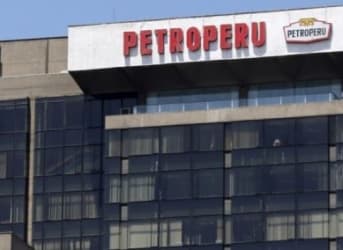The state-owned oil company in Peru is responsible for multiple oil spills over the past few weeks, sparking anger from indigenous tribes in the area. In fact, one indigenous community have taken eight public officials hostage over their handling of the oil spill.
According to Petroperu, the Wampis community of Mayuriaga took control of a grounded military helicopter on March 6, taking the crew members hostage, along with an official from Petroperu and government workers from the Ministry of Energy and Mines as well as from Peru’s environmental regulator OEFA. Related: Why Saudi Arabia Has No Intention To End The Oil Glut
It all started with an oil spill from one of Petroperu’s pipelines, which spilled 1,000 barrels of oil into a tributary of the Amazon River on February 3. Another 2,000 barrels of oil spilled from the same line nine days later, affecting various indigenous communities and polluting the rivers. Amazon Watch, an environmental organization, has captured some pretty startling images of the contaminated rivers.
The 40-year old pipeline carries 5,000 to 6,000 barrels of oil per day.
The conflict erupted into a standoff, though, after Petroperu formed an emergency response and failed to include Mayuriaga on its list of areas to help even though it was negatively impacted by the spill. The Wampis took hostages in response to the company’s failure to help them. Petroperu says that it will fix the mistake and, in any event, the company has been helping the community anyway.
But, the problem for Petroperu is that these are not isolated incidents. According to Al-Jazeera, this is the 20th leak in the last five years from one of their pipelines. Moreover, an Al-Jazeera reporter visited the site and said that not only had Petroperu officials not come to inspect the area affected by the spill in the immediate aftermath, but it took weeks before relief was sent. Related: How Leonardo DiCaprio’s Carbon Footprint Clashes With His Climate Claims
The Wampis said that they had to start the cleanup by themselves. Worse, they had food shortages because the contamination is affecting livelihoods. “This oil spill has already resulted in severe and irreparable harm to the community lands of Mayuriaga and to our collective territory as a people. Responsibility lies squarely with Petroperu, who have acted with complete negligence,” Wrays Perez Ramirez, president of the Wampis, said in a statement. “Over more than 40 years they have failed to maintain and repair their pipeline knowing full well that it needs constant maintenance and replacement every 10-15 years."
A former director of Petroperu says that the state-owned company is struggling financially, and has few resources to spare for maintenance. The ruthless cost-cutting inevitably results in oil spills. "The company itself doesn't assign enough resources or carry out the necessary activities to make sure the pipeline operates accurately and securely," German Alarco said.
“It is a systemic problem,” Clinton Jenkins, a conservation biologist at the Institute of Ecological Research, in São Paulo, Brazil, told Scientific American in an interview. “These spills occur regularly and the impact will not easily disappear.” Related: Iran Slowly But Steadily Increasing Oil Market Share
According to the chief engineer of E-Tech International, a U.S. environmental consulting firm that works in Peru, there is little prospect that Petroperu will be able to improve the quality of its pipeline infrastructure. “The main issue is that the pipeline is old and deteriorated, the landscape through which it runs is almost inaccessible and monitoring and repair tasks are not a priority—there will be more spills,” Bill Powers of E-Tech International told Scientific American.
Peru is not a large oil producer. It has 741 million barrels of oil reserves, seventh largest on the continent, and only produced about 180,000 barrels of oil and natural gas liquids per day in 2014. But much of those reserves are located in the Amazon, often in protected areas. Petroperu is allowed to explore, produce, and move oil in “protected” areas. Only national parks are blocked from development.
Of the eight hostages taken by the indigenous community on March 6, four were allowed to leave a day later with the helicopter. The other four were held in captivity, as the group demanded emergency supplies and to be included in the response plan. While the company promises to correct its mistake, the long-term impacts on the ecosystem and the population are uncertain. Petroperu could face $17 million in fines because of the spills.
By Nick Cunningham of Oilprice.com
More Top Reads From Oilprice.com:
- Oil Prices Up In Spite Of Crude Inventory Build
- Exposing The Oil Glut: Where Are The 550 Million Missing Barrels?!
- Nigerian Pipeline Bombed, Knocking Off 300,000 Barrels Per Day


















